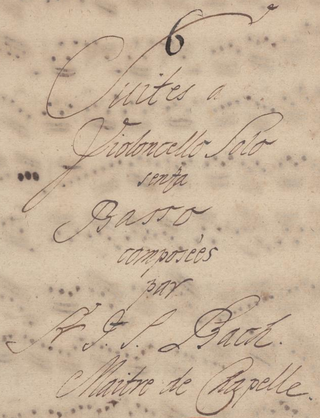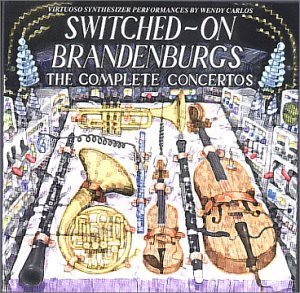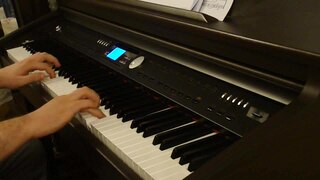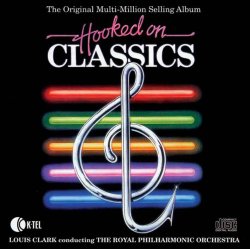
The six Cello Suites, BWV 1007–1012, are suites for unaccompanied cello by Johann Sebastian Bach (1685–1750). They are some of the most frequently performed solo compositions ever written for cello. Bach most likely composed them during the period 1717–1723, when he served as Kapellmeister in Köthen. The title given on the cover of the Anna Magdalena Bach manuscript was Suites à Violoncello Solo senza Basso.
The Bach-Werke-Verzeichnis is a catalogue of compositions by Johann Sebastian Bach. It was first published in 1950, edited by Wolfgang Schmieder. The catalogue's second edition appeared in 1990. An abbreviated version of that second edition, known as BWV2a, was published in 1998.

The title Notebook for Anna Magdalena Bach refers to either of two manuscript notebooks that the German Baroque composer Johann Sebastian Bach presented to his second wife, Anna Magdalena. Keyboard music makes up most of both notebooks, and a few pieces for voice are included.
The year 1725 in music involved some significant events.

The Well-Tempered Synthesizer is the second studio album from the American musician and composer Wendy Carlos, originally released under her birth name Walter Carlos, in November 1969 on Columbia Masterworks Records. Following the success of her previous album, Switched-On Bach (1968), Carlos proceeded to record a second album of classical music performed on a modular Moog synthesizer from multiple composers, including Johann Sebastian Bach, Claudio Monteverdi, Domenico Scarlatti, and George Frideric Handel. Its title is a play on words from Bach's set of preludes and fugues named The Well-Tempered Clavier.

Switched-On Brandenburgs is a 1980 double album by Wendy Carlos. It was the seventh album released by Carlos, and the fourth album in her project of classical music which also included Switched-On Bach (1968), The Well-Tempered Synthesizer (1969), and Switched-On Bach II (1974). It was the first album she released under the name of Wendy Carlos rather than Walter Carlos.

"A Lover's Concerto" is a pop song written by American songwriters Sandy Linzer and Denny Randell, based on the 18th century composition by Christian Petzold, "Minuet in G major", and recorded in 1965 by the Toys. "A Lover's Concerto" sold more than two million copies and was awarded gold record certification by the RIAA.
"Bist du bei mir, geh ich mit Freuden" is an aria from Gottfried Heinrich Stölzel's opera Diomedes, which was first staged on 16 November 1718. The aria is best known as "Bist du bei mir," BWV 508, a version for voice and continuo found as No. 25 in the 1725 Notebook for Anna Magdalena Bach.

Klavierbüchlein für Wilhelm Friedemann Bach is a collection of keyboard music compiled by the German Baroque composer Johann Sebastian Bach for his eldest son Wilhelm Friedemann. It is frequently referred to simply as Klavierbüchlein.

The Chronicle of Anna Magdalena Bach is a 1968 film by the French filmmaking duo of Jean-Marie Straub and Danièle Huillet. It was their first full-length feature film, and reportedly took a decade to finance. The film stars renowned harpsichordist Gustav Leonhardt as Johann Sebastian Bach and Christiane Lang as Anna Magdalena Bach. The orchestral music was performed by Concentus Musicus and conducted by Nikolaus Harnoncourt. It is the first of several Straub-Huillet films to be based on works of classical music. The film was entered in the 18th Berlin International Film Festival.

The Minuets in G major and G minor, BWV Anh. 114 and 115, are a pair of movements from a suite for harpsichord by Christian Petzold, which, through their appearance in the 1725 Notebook for Anna Magdalena Bach, used to be attributed to Johann Sebastian Bach. These minuets, which are suitable for beginners on the piano, are among the best known pieces of music literature. The 1965 pop song "A Lover's Concerto", of which millions of copies were sold, is based on the first of these Minuets.
Sophocles Papas was a Greek classical guitar pedagogue and music publisher.
Minuet in G major can refer to numerous musical compositions, including:

The 50 Greatest Pieces of Classical Music is a compilation of classical works recorded by the London Philharmonic Orchestra with conductor David Parry. Recorded at Abbey Road Studios, Royal Festival Hall and Henry Wood Hall in London, the compilation was released in digital formats in November, 2009 and as a 4-CD set in 2011. The 50 Greatest Pieces of Classical Music has sold over 200,000 copies and spent over three days as one of the top 10 classical albums on iTunes.

Hooked on Classics, produced by Jeff Jarratt and Don Reedman, is a multi-million selling album recorded by Louis Clark and the Royal Philharmonic Orchestra, published in 1981 by K-tel and distributed by RCA Records, part of the Hooked on Classics series.
The Orchestral Suite in G minor, BWV 1070 is a work by an unknown composer. It is part of the Bach-Werke-Verzeichnis catalogue of the works of Johann Sebastian Bach, and sometimes called the "Orchestral Suite No. 5", but was almost certainly not composed by him. It is more likely that the composer was his son Wilhelm Friedemann Bach. It is a French suite with an overture and several dances, which has a similar structure to the 4 orchestral suites known to have been written by J. S. Bach. Evidence for its not being by the older composer includes the form of the opening movement, which differs from that used in the suites known to be by him, and the fact that the third movement is in a different key to the rest of the work, whereas J. S. Bach's suites are homotonal.










